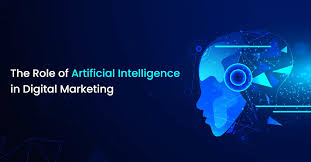Top Social Media Marketing Trends to Watch 2025
In today’s hyper-connected world, staying ahead in digital strategy means staying in tune with evolving social media marketing trends. Platforms like Instagram, TikTok, LinkedIn, and X (formerly Twitter) are constantly updating features, shifting algorithms, and redefining user expectations. To remain relevant, brands must pay attention to the social marketing trends shaping the way audiences engage, shop, and interact. In this detailed guide, we explore the top social media marketing trends to watch this year backed by insights, examples, and actionable tips that any business or freelancer can apply. 1. Short-Form Video: The King of Content One of the most powerful social marketing trends right now is the dominance of short-form video. Platforms like TikTok, YouTube Shorts, and Instagram Reels are prioritizing brief, engaging, mobile-friendly content. Why It Matters: Pro Tip: Repurpose blog content into 30-second tips, behind-the-scenes clips, or customer testimonials using Reels or Shorts. 2. In-App Shopping and Social Commerce Social commerce continues to transform how users shop online. From Instagram Shops to TikTok storefronts, this is one of the most profitable social media marketing trends to capitalize on this year. Why It Matters: Action Step: Tag products in your posts and stories. Use carousel ads to showcase collections and leverage user-generated reviews. 3. AI-Powered Personalization & Automation AI is revolutionizing how marketers create, deliver, and measure content. One of the more technical yet impactful social media marketing trends is the use of artificial intelligence in personalization and automation. Why It Matters: Recommended Tools: ChatGPT, Jasper, ManyChat, and Adobe Sensei for intelligent automation. 4. Authentic UGC (User-Generated Content) Trust is currency in social media, and few social media marketing trends deliver ROI like authentic UGC. Whether it’s customer reviews, photos, or story mentions, users love hearing from other users. Why It Matters: Pro Tip: Create a branded hashtag and encourage customers to share photos or videos with your products. 5. Rise of Micro & Nano Influencers The influencer game has changed. Rather than chasing celebrities, brands are working with micro (10k–100k followers) and nano (1k–10k) influencers one of the most authentic social media marketing trends today. Why It Matters: How to Start: Use influencer platforms or search by hashtags to find real users in your niche. 6. Social Listening & Sentiment Analysis One of the most strategic social media marketing trends emerging is real-time social listening. Brands are tracking what users are saying not just about them, but about their industry, competitors, and values. Why It Matters: Tools to Use: Brandwatch, Hootsuite Insights, Sprinklr, and Mention. 7. Real Over Perfect: The Shift Toward Raw Content Gone are the days when overly filtered, “perfect” content performed best. One of the most refreshing social media marketing trends is the rise of unpolished, raw, and relatable posts. Why It Matters: Try This: Share a “day in the life” story or unfiltered testimonial video from a client or team member. 8. Platform-Specific Storytelling One of the smarter social media marketing trends involves treating each platform individually rather than reposting identical content. What works on LinkedIn won’t always work on Instagram. Why It Matters: Strategy Tip: Design different versions of the same message:• A video for Instagram• A carousel for LinkedIn• A poll or thread on X 9. The Return of Audio Content Audio-first content is surging again from podcasts to Twitter Spaces and LinkedIn Audio Events. Among all emerging social media marketing trends, this one promotes longer-form engagement. Why It Matters: Start Here: Host a 10-minute weekly voice note series on trending topics in your niche. 10. Mobile-First Content Strategy With over 90% of users accessing social media via smartphones, mobile-first design is not optional. It’s one of the most critical social media marketing trends to implement right away. Why It Matters: Optimization Tips: Use 9:16 vertical formats, minimal text overlays, and auto-captioning. 11. Sustainability and Ethical Marketing Conscious branding is among the most meaningful social media marketing trends this year. Brands are speaking up about climate action, social equity, and ethical sourcing and users are listening. Why It Matters: Execution Idea: Start a “sustainability Saturday” series showing behind-the-scenes initiatives or product choices. 12. Community-Led Campaigns Social isn’t just a broadcast tool it’s a place for community. Campaigns that build conversation, not just visibility, are core to the most human-centered social media marketing trends. Why It Matters: Action Step: Create VIP Facebook or WhatsApp groups for customers, or run AMAs (Ask Me Anything) monthly. 13. Data-Driven Storytelling Today’s social media marketing trends blend data with emotion. Performance metrics help craft better stories not just reports. Why It Matters: Tools: Meta Business Suite, LinkedIn Analytics, YouTube Studio, and UTM tracking via Google Analytics. 14. Purpose-Driven Influencer Partnerships One of the most values-aligned social media marketing trends is partnering with influencers who support a cause not just product placement. Why It Matters: Example: Partner with an eco-conscious influencer to co-launch a sustainable product line or awareness campaign. 15. Cross-Platform Content Repurposing Instead of reinventing the wheel, smart brands repurpose one idea into many formats. Cross-platform repurposing is one of the most practical social media marketing trends for busy teams. Why It Matters: Content Map: • Blog → Carousel + Reel• Webinar → Podcast Clip + Quote Graphic• Infographic → LinkedIn Post + Pinterest Pin Final Thoughts: Stay Ahead of the Curve From the dominance of short-form video to the rise of audio and ethical marketing, this year’s social media marketing trends reflect a deeper shift toward personalization, connection, and authenticity. To succeed: Implementing even a few of these social marketing trends will keep your brand not only relevant but respected in 2025. Need help implementing these strategies? As a digital marketing freelance specialist, I help brands like yours navigate and apply the latest social media marketing trends to generate real results. Let’s connect!

